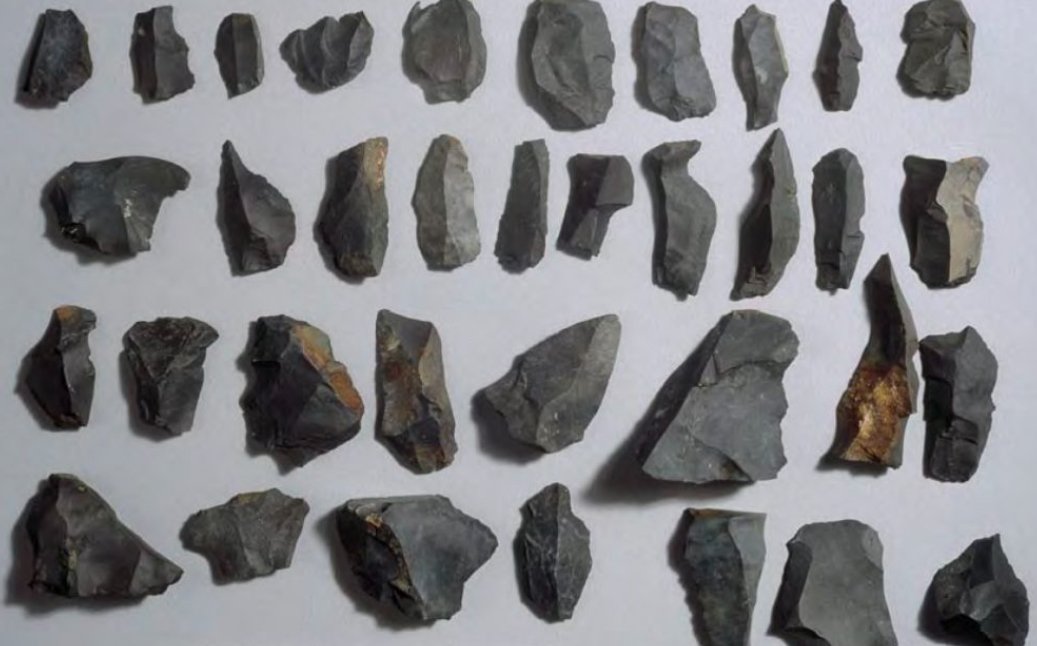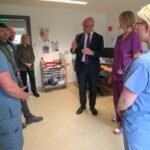Archaeologists have uncovered evidence of one of the earliest human populations to inhabit Scotland, offering new insights into how ancient nomadic hunter-gatherers ventured far beyond their known territories into the northernmost reaches of the British Isles.
Led by Professor Karen Hardy from the University of Glasgow, a multidisciplinary team of scientists and archaeologists has made the remarkable discovery on the Isle of Skye. The findings include stone tools dating back to around 11,500 to 11,000 years ago, at the tail end of the Late Upper Palaeolithic period, shortly after the end of the Younger Dryas — a period marked by dramatic climatic shifts and glacial retreat.
The Journey Northward
The discoveries center on the west coast of Scotland, now home to the largest known concentration of evidence for these early human populations in the country. The tools, found alongside enigmatic stone circular structures, suggest that these groups, likely from the Ahrensburgian culture of northern Europe, made the arduous journey from the lowlands of continental Europe across what is now submerged land — once known as Doggerland — to reach Skye.
Professor Hardy, who led the research, explained the significance of the find: “This is a hugely important discovery for understanding how the earliest human groups in northwest Europe expanded into Scotland. Their journey north, following animal herds, was a monumental achievement during a time when the landscape was constantly changing due to glacial melting and rising seas.”

A Changing Landscape
The research team, which included experts from the universities of Leeds, Sheffield, Leeds Beckett, and Flinders University in Australia, used detailed maps of ancient glacial formations and fluctuating sea levels to reconstruct the environment these early humans encountered. Their findings reveal a volatile landscape, one that was dramatically altered by the retreating glaciers and rising oceans.
In particular, the famous Parallel Roads of Glen Roy, which are marked by unique ridges caused by ancient glacial activity, were cited as key evidence of the environmental changes these early settlers must have faced. These changes, including flooding and rapid shifts in the land’s shape, would have made the journey even more perilous.
Tool Use and Strategic Settling
Upon reaching Skye, these early inhabitants crafted stone tools from local materials, including flint and other readily available resources. The team believes the settlers strategically chose their settlement locations based on access to coastal and riverine resources, suggesting a deep understanding of their environment.
Professor Hardy emphasized that this discovery offers a fresh perspective on early human settlement patterns in Scotland: “These people did not simply wander into an empty land. They chose locations that offered access to both resources and materials that were crucial for survival.”
Expanding Human Reach
The team’s findings not only contribute to the understanding of early human migration patterns but also suggest a more extensive network of human settlement in Scotland than previously believed. Evidence of similar Ahrensburgian cultures has been found across other Scottish islands, including Tiree, Orkney, and Islay, indicating that these early populations were capable of long sea voyages.
The researchers point to the importance of these sea journeys as key to understanding the spread of human populations. The paper published in The Journal of Quaternary Science notes that the presence of these early humans on Skye represents an expansion of the Ahrensburgian culture to the extreme northwest limits of the European mainland.
Challenging Environment and Adaptation
The evidence suggests these people adapted to a rapidly changing environment. As glaciers retreated, the landscape of Scotland transformed from a frozen wilderness into a dynamic environment of melting ice, rising sea levels, and shifting coastlines. This would have created significant challenges for the hunter-gatherers, who relied on their knowledge of the land to survive.
Dr. Martin Wildgoose, a local archaeologist who assisted in the discovery, explained that the strategic nature of their settlements suggests an advanced understanding of the landscape, as well as an ability to adapt quickly to a fluctuating environment.
Looking Ahead: Uncovering More
Despite the significance of the Skye findings, the research team acknowledges that there is still much to uncover. According to the paper’s conclusions, the sites discovered so far represent only a fraction of the potential evidence scattered across the Scottish islands. With the help of new technologies and refined methods, there may be more hidden settlements waiting to be discovered.
Professor Hardy expressed cautious optimism for future excavations: “While these sites are difficult to access, we are hopeful that further exploration and technological advancements will help us piece together more of this puzzle and shed light on how these early people lived and adapted to one of the harshest environments in prehistoric Europe.”
As archaeologists continue to explore the far reaches of Scotland’s islands, it becomes increasingly clear that the human story in the British Isles is far older and more complex than previously thought. The discovery on Skye offers a new chapter in the history of human migration, settlement, and survival — one that is far from finished.


















